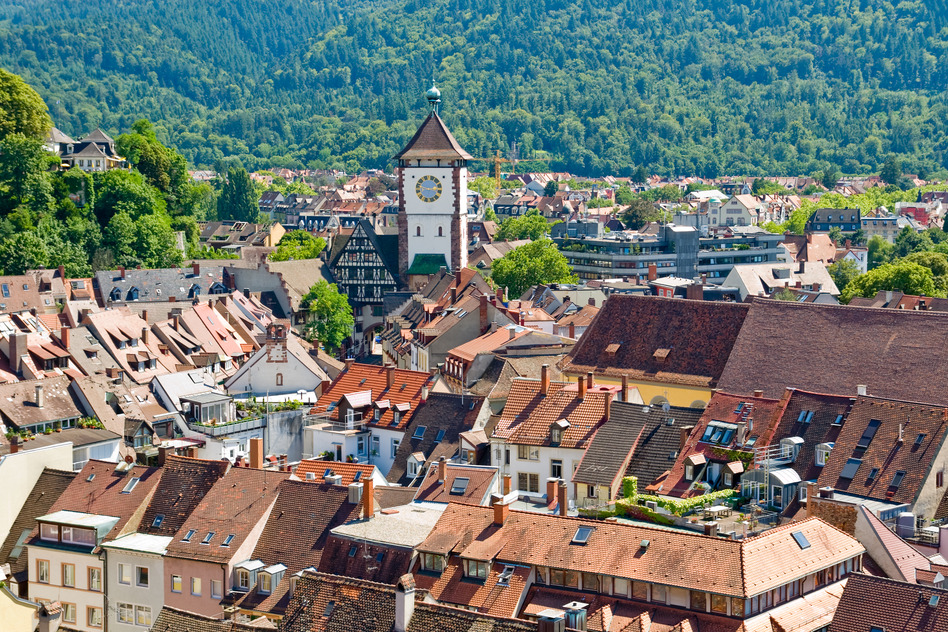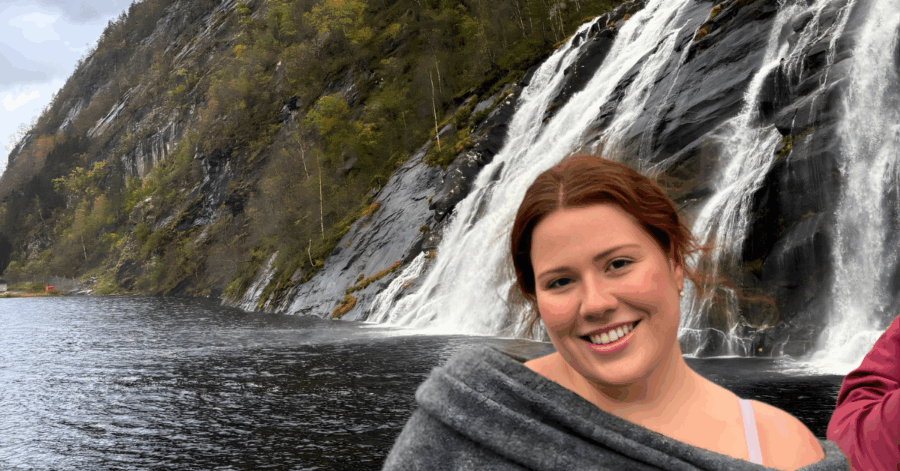PRE-DEPARTURE STATS
Anyone preparing to study abroad is familiar with this question: Where should I go? In response, people such as myself, other peer advisors, and your program coordinator will help guide you to your decision based on a variety of factors including financial, academic, language, etc. Friends will offer their advice based on their opinions and experiences. And, family will do the same with you in mind. Ultimately though, it’s up to you. And believe me, sometimes it’s not easy.
However, those who have studied abroad and those currently studying abroad can probably agree on the fact that their reasons for choosing their study abroad destinations don’t compare to the reasons they bring back for wanting to return. This isn’t the case for everyone, but it certainly was for me with Freiburg, Germany.
 Freiburg is a mid-size university town of about 220,000 people nestled in the Black Forest in southwestern Germany. It’s a 30-minute drive west to France and an hour drive south to Switzerland. From pictures, it definitely has the European appeal of an old city, which makes sense as Freiburg was founded in 1122. Statistically, it’s the sunniest and warmest city in Germany.
Freiburg is a mid-size university town of about 220,000 people nestled in the Black Forest in southwestern Germany. It’s a 30-minute drive west to France and an hour drive south to Switzerland. From pictures, it definitely has the European appeal of an old city, which makes sense as Freiburg was founded in 1122. Statistically, it’s the sunniest and warmest city in Germany.
These are what I like to call Freiburg’s “pre-departure stats,” the information available to most students when considering study abroad destinations; and this is about as much information I had on Freiburg prior to my arrival there. For the record, these stats were great reasons to get me there, but now I think of Freiburg a little differently in hindsight.
SO, WHAT IS FREIBURG?
I could point to it on a map. I can see pictures of it online. I can read about the history of the city. I can find many of these “pre-departure stats” online, but what does Freiburg smell like? What does it sound like? What makes Freiburg different from any other German city? These are the “experience-based stats” we collect when we go abroad, and I have quite a collection of these stats from a year as an exchange student in Freiburg.
So, what is Freiburg, Germany? When Freiburg comes to mind now, I think of the people I met while I was there, the wild blueberries in the Black Forest, the famous medieval cathedral (Freiburger Münster) decorated for Christmas, not being able to find maple syrup at the grocery store, the mosaics in the sidewalk, the French influence in the Western part of the city reminiscent of the French presence during the Marshall Plan post-WWII, and the list goes on.
EXPERIENCE-BASED STATS
One lesson I learned very quickly was that living in Freiburg requires a bike. The trams don’t reach every location in the city and they stop running between 12:30am and 5:00am, so having a bike got me to those remote locations as well as home after those World Cup games that lasted into the am due to the time difference. All over Freiburg, you see bikes; professionals, students, elderly, and entire families can all be seen, on any given day rain, snow, or sunshine, riding bikes.
The popularity of bikes in Freiburg is one of many reasons it’s often listed as one of the cleanest cities in the world. Another reason for that is that Baden-Württemberg, the state in which Freiburg is located, is ruled by the Green Party of Germany. This translated to me asking my mother where the recycling receptacle for glass was my first day back in Texas. Basically, you learn to recycle in Freiburg and not only to recycle, but also to separate. I had three separate containers for recycling in my apartment. Needless to say, after a year of recycling it became habitual.

In addition to the environmentally friendly and active Freiburger culture, because of the city’s close proximity to France and the Mediterranean countries, colorful stone mosaics in the sidewalk (usually only seen in the Mediterranean countries) can be seen throughout the city, not to mention the existence of Italian ice cream shops on every corner. It isn’t uncommon to arrive in the city center on a summer day and only see a handful of people not sitting in the sun enjoying an ice cream cone. The allure of this spectacle with the small canals (Bächle) running through the city providing the ambient sound of running water, I must say, was responsible on one or two occasions for a class absence.
These unique attributes of Freiburg have a reciprocal relationship with the culture of the city, mainly seen in the people. Freiburg is alternative compared to other German cities, with the exception of Berlin (though Freiburg trumps Berlin when it comes to cleanliness). Freiburg attracts people from all over Europe who are active outdoors, environmentally conscientious, and enjoy the experience of different cultures daily. In this aspect, the people of Freiburg don’t differ all that much from the people of Austin.
There are 30, 000 students in Freiburg, giving it qualities of a university town (it also doesn’t hurt that Freiburg is home to three German breweries), but simultaneously Freiburg is an expensive region in which to live for non-students so, oftentimes, you see a disproportionate amount of young people and elderly retirees in the same space. This translates to Freiburg as a major shopping hub and activity center for people in the region (including France and Switzerland). The mixture of old and young people can be seen not only in the city, but in the Black Forest as well. Nordic walking is very common in Freiburg for older Freiburgers to work off that Italian ice cream, in addition to riding their bike.
FITTING IN, IN ___________
So, even listing only a few of the many “experience-based stats” with which I returned, one can see that “pre-departure stats” are only preliminary. With that said, I’d like to end on a note of encouragement: Don’t worry too much about picking the perfect location for study abroad. While abroad, you become a part of the city and wherever you go, you’ll find ways to fit in. My greatest feeling upon my return was knowing that not only do I fit in here in at home, but now I fit in, in Freiburg, Germany.






